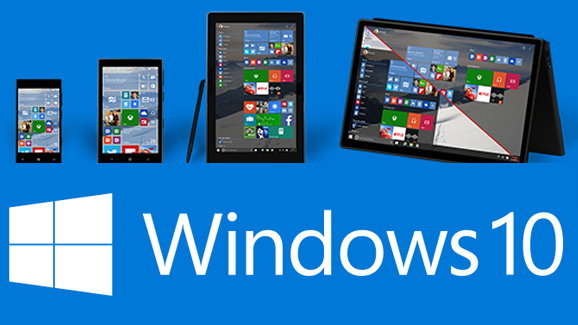Will Apple's winning strategy work wonders for Microsoft?
Is Continuity going to help Microsoft?

The announcements that accompany Windows 10 are starting to come faster as Microsoft unveils more and more of the upcoming iteration of the world's most popular operating system, asking beta testers to submit proposals and find bugs within the software.
In January, Microsoft unveiled the Consumer Preview of the operating system, showing off new features which include Cortana, the virtual assistant, and various initiatives that allow desktop users who don't have a touchscreen to use Windows 10 more effectively than Windows 8. In many ways, Windows 10 is ahead of Apple's platform as OS X offers nothing more than basic text translation – Siri is always poised to make an appearance but never seems to – and has no ability to work on a touchscreen device.
One OS to rule all
There is one area in which Microsoft does endeavour to mimic OS X's capabilities, however, and that is with regard to integration between desktop, tablet and smartphone operating systems. Apple's approach is simple: the operating systems are distinct but share certain characteristics and apps that are similar, but built exclusively for the different operating systems. Both iOS and OS X have Safari and while they share some of the same code they are both definitely exclusive apps with different UIs and different features.
Contrastingly, Microsoft has built Windows 10 and Windows Phone (soon to be called Windows 10) with each other in mind, creating what is effectively one OS spread over two devices (tablets run Windows 10 as standard) which creates a whole new set of problems.
Apple's approach forces developers to create two or three versions of their app if they want to cover Apple's entire user base – bear in mind that while OS X is relatively small, Apple is still shifting almost six million units per quarter and many creative types and software developers use OS X – which takes extra time to code. Conversely, each app can be tailored to the experience of each device: an OS X app needs to feel and work well on a Mac computer while an iOS app needs to have a different experience on an iPad to an iPhone.
The permutations of Apple hardware are also much more limited, making the job of developers far easier. Just as Android has many screen sizes and hardware options, Windows works on so many PCs and tablets that an app made for one device almost certainly won't work on another.
The one area of the ecosystem that Microsoft does have complete control over is Windows Phone, soon to be rolled into Windows 10. In the early days of Windows Phone 7, Microsoft imposed minimum hardware restrictions on manufacturers making it impossible for them to build a device that didn't conform to the restrictions.
Sign up to the TechRadar Pro newsletter to get all the top news, opinion, features and guidance your business needs to succeed!
App shortage
As a result, developing for Windows Phone was easy, the only problem being that the mobile operating system never saw the level of uptake that Windows on the desktop had, or indeed that of iOS and Android. Currently, Microsoft owns around 4% of the smartphone market making the firm a small time player and, as a result, very few apps are available for Windows Phone.
Many column inches have been written about Windows Phones' lack of apps and how this problem has created a vicious circle for Microsoft, and the solution Redmond has come up with is allowing developers to simultaneously create apps for Windows 10 and Windows Phone, effectively merging the two. Many features have been taken from Windows Phone and placed in Windows 10, not least the design of Windows 8 but, ultimately, this strategy is doomed.
Microsoft's resources would be far better applied elsewhere rather than working on Windows Phone and attempting to integrate the two operating systems effectively. Apple can integrate iOS and OS X effectively because it starts with iOS, the far more popular OS, and works "back to [the] Mac" as Apple's event was pithily named.
Max Slater-Robins has been writing about technology for nearly a decade at various outlets, covering the rise of the technology giants, trends in enterprise and SaaS companies, and much more besides. Originally from Suffolk, he currently lives in London and likes a good night out and walks in the countryside.